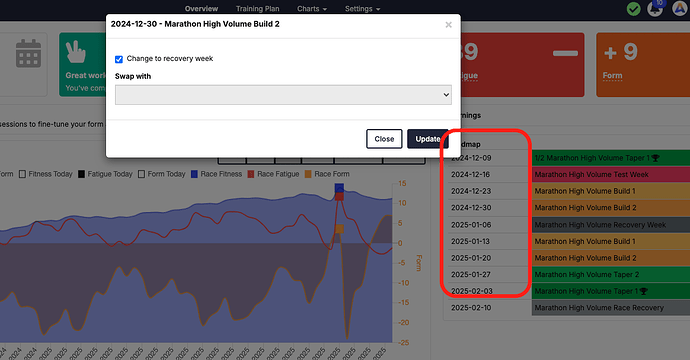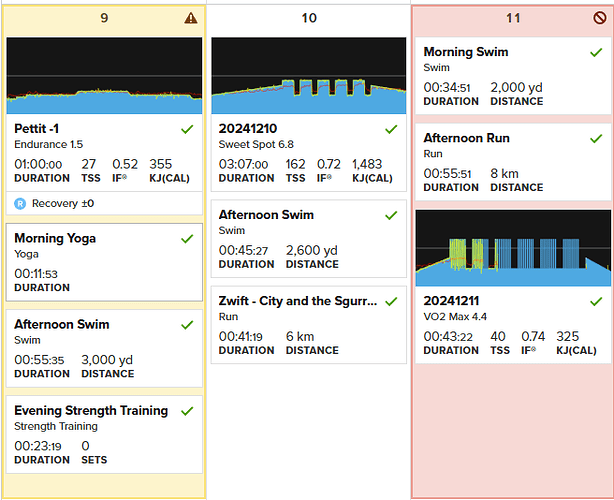Hi there,
My wife has just completed Ironman Cozumel following Athletica plan (less than 3 months block of training). This her first long distance, having done multiple 70.3.
She is very happy with the training, especially the swim and run, coming from a cycling platform, and also the result, took a week off to recover and started to plan for next goal, a 70.3 in April.
We had the first week of testing, but replacing FTP and 5k test by similar load and intensity workout, just not all out, as her lung do not support all out effort.
Then goes the first week of training scheduled by Athletica, with a 1500 of load combined, slightly more than her higher week during ironman preparation ! I am surprised of such a high load to start a plan for a lower distance.
I would find a more progressive overload after a race has been completed would be more appropriate.
Obviously she started to feel fatigue on Wednesday and has failed workouts on Wednesday. Some other platforms have predicted it, a cycling platform gave a red flag, which only usually occurs after major races (happened after the Ironman), a watch told to rest for 80+ hours… but next day was another load day. I would expect athletica to do better as managing the load but maybe I am missing something ?
I also find a bit overkill to have 4 blocks of build and would have started back with some base to allow some time for the body to be ready for another build.
Is there a way for the athlete or the coach to change a block from build to base ?







